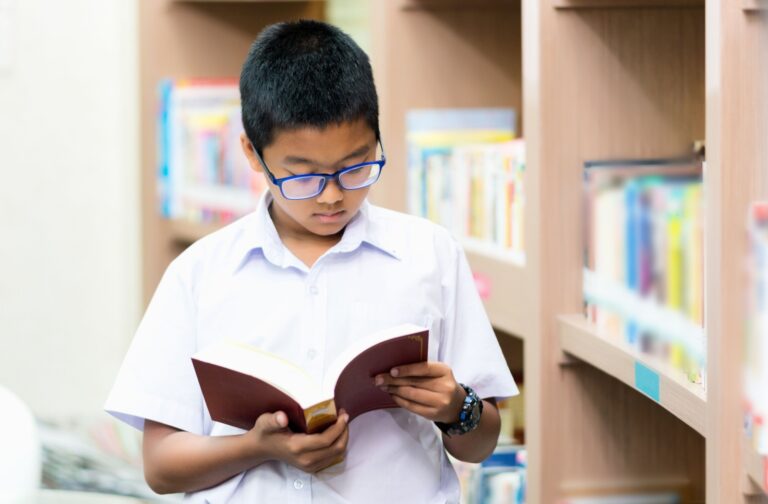Table of Contents

Introduction
Myopia, also known as nearsightedness, occurs when the eye is too long or the cornea is too curved, making it difficult to focus on distant objects. It’s quite common, with over 40% of individuals in the United States having some level of myopia. And unfortunately, myopia can sometimes lead to blindness or vision loss resulting from complications, such as retinal detachment or cataracts, later in life.
The plus side is that there has been a lot of success with myopia control methods to help prevent myopia from progressing into high myopia, which is where many of the complications, aside from blurry vision, come from.
Regular eye exams are a great way for your child’s eye doctor to detect myopia early and come up with an effective treatment plan.
What Is Myopia?
Myopia occurs when the eyeball is too long, or the cornea (the clear front part of the eye) is too curved. This causes light rays to focus in front of the retina rather than directly on it, which results in distant objects appearing blurry, while close-up objects will appear clear unless there’s another kind of refractive error at work.
Myopia often occurs during childhood and typically stabilizes in early adulthood. Experts estimate that more than 40% of individuals in the United States have some level of myopia, making it an extremely common refractive error.
Causes of Myopia
Can Myopia Lead to Blindness & Other Complications?
Myopia 近视 Control
Atropine Eye Drops
Multifocal Eyeglasses & Contact Lenses
Ortho-K
Orthokeratology involves using specially designed contact lenses that reshape the cornea while you sleep. The gas-permeable lenses create a temporary effect that improves vision in the morning. But ortho-k lenses must be worn every night to maintain the correction and myopia control effects.
You may recognize ortho-k lenses as:
- ok镜/梦戴维
- 欧几里德 EUCLID
- 露晰得LUCID
- 阿尔法
- 菁视C&E
- 易安易E&E
- 亨泰
- Dreamlite
Our eye doctors at Golden Vision have extensive knowledge in providing and fitting these lenses to help slow the progression of myopia. For more information please contact us or book a free virtual consultation. Golden Vision(高登眼镜)的角膜塑形镜可以有效的减缓近视的加深。 我们的眼科医生在验配角膜塑形镜这方面拥有丰富的经验和知识。欲获取更多信息,请与我们联系或预约免费网上咨询。
Prescription Eyeglasses
Prescription glasses can be especially beneficial for children at risk of developing myopia or who have already been diagnosed with it. Researchers have found that wearing multifocal glasses can reduce myopia progression in children by up to 50%. This means that children who wear multifocal glasses have a much lower risk of developing high levels of myopia later in life.
One of the biggest benefits of using prescription glasses as a myopia control method is that they are non-invasive and easy to use. Unlike other treatment options such as ortho-k lenses or eye drops, prescription glasses require little maintenance and are suitable for individuals of all ages. Glasses can easily be adjusted to meet the changing visual needs of the wearer, making them a versatile and effective tool for managing myopia.
Increased Time Outdoors

Discuss Your Eye Health with Your Optometrist
By understanding the causes of myopia and utilizing appropriate methods for myopia control, we can effectively manage the condition and reduce the risk of complications. Regardless of the myopia control method chosen, early intervention and proactive measures can make a significant difference in stopping myopia’s progression and improving the long-term vision health of individuals.
Contact one of our Golden Vision Optometry offices in Arcadia, Cupertino, Dublin, Irvine, Milpitas, Rowland Heights, San Diego Plaza, San Francisco, or San Gabriel to book an appointment with one of our experienced optometrists. We’re happy to review your or your child’s vision needs and eye health to make sure we’re taking the steps necessary for myopia correction and prevention.

